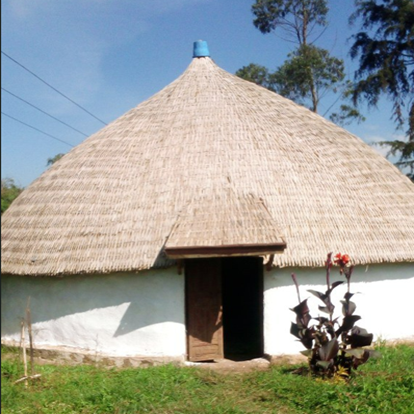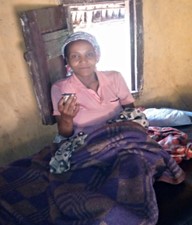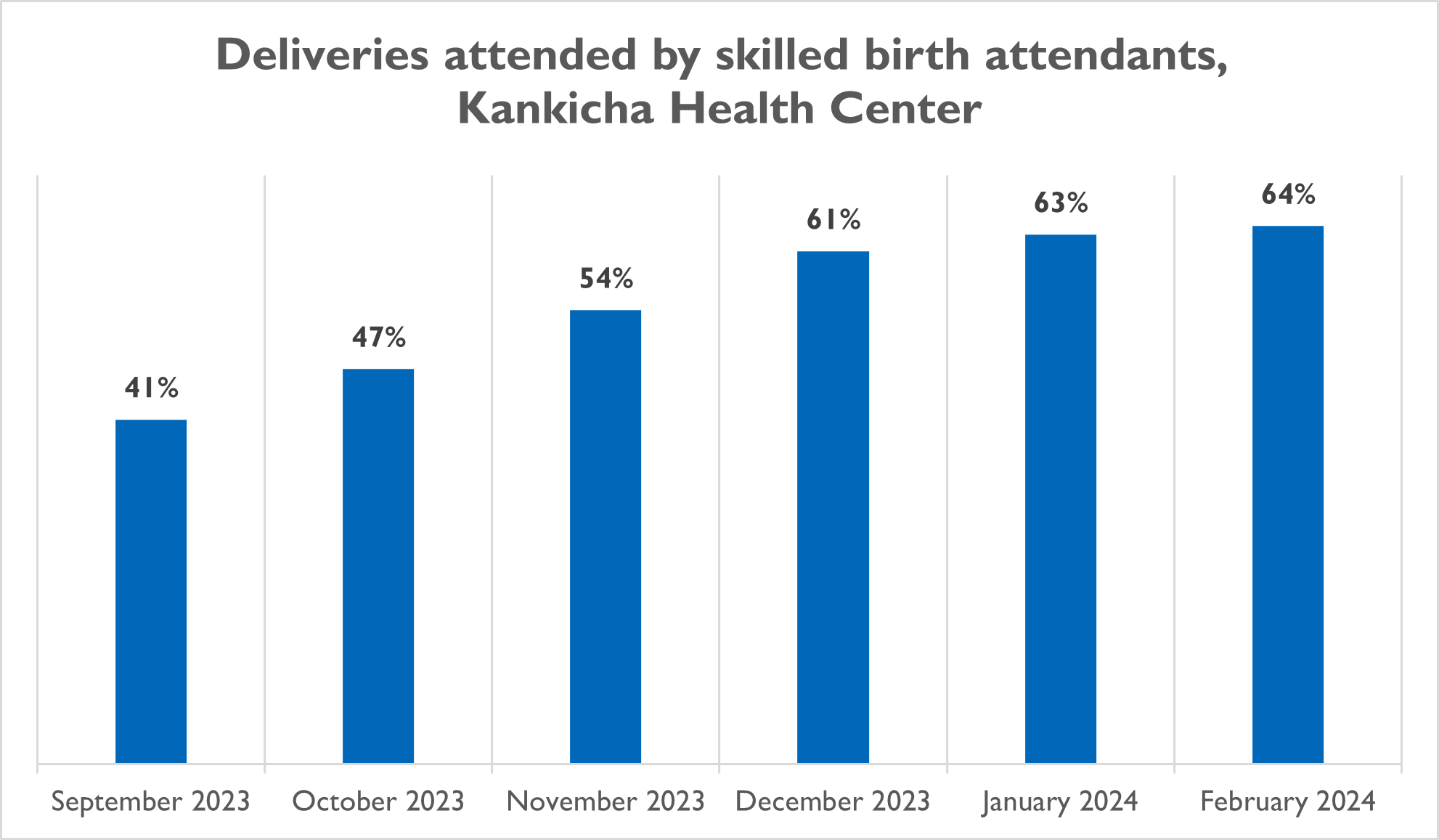Success Story
Improving Service Delivery with Maternity Waiting Rooms: The Case of Kankicha Primary Healthcare Unit in Ethiopia’s Sidama Region
April 3, 2024
Community-based health workers play a crucial role in delivering quality health services to their neighbors and responding to community needs in a timely and tailored fashion. In Ethiopia, 90 kilometers away from the Sidama Regional State’s capital city Hawassa and eight kilometers away from the center of the Hula district, the Kankicha Health Center provides services to over 33,679 people living in seven kebeles under the its catchment area. This is just one health center supported by NPI EXAPND where local organizations are implementing social accountability activities to enhance health workers’ relationships with the local community to improve the quality and uptake of family planning and maternal, newborn, and child health services.
The Kankicha Health Center provides comprehensive family planning and maternal, newborn, and child health services including delivery, antenatal care, postnatal care, immunization, and the routine treatment of sick children in addition to other curative and preventive health services to the local community. Through local partner Progress Integrated Development Organization (PICDO), the health center has been practicing all six steps of the full community scorecard cycle to address pertinent issues raised by during scoring and public meetings.

Constructed maternity waiting room Kankicha Health center, Sidama Region, Ethiopia.
During the third round of scoring, the community spoke up about the high rate of home deliveries happening in the catchment kebeles without assistance from skilled health personnel. The lack of a skilled provider was due to the far distance that would be required to transport mothers in labor to health workers located at the Kankicha Health Center. Additionally, there was not a functional maternity waiting room at the health center for the laboring mothers to rest before and after delivery.
Service providers at the health center and woreda leaders acknowledged these problems and developed an immediate action plan, assigning responsible bodies to solve the problem of the lack of a maternity waiting room through community participation. The community organized to gather the resources necessary to build the waiting area including local construction materials, money for the cost of labor, and volunteers to participate in the construction of the maternity waiting area in the health center compound.
In many rural health centers in Ethiopia, maternity waiting homes are built in the health center to resemble a traditional house in order to feel more like a mother’s home. Pregnant women who live very far away from health facilities are admitted to these homes shortly before delivery or earlier for close medical attention when they have a high-risk pregnancy.
The maternity waiting room at the Kankicha Health Center was built through the contributions of the community and service providers who allocated a total of 80,000 Ethiopia Birr (US$1,500) to the project. The community contributed its labor and local materials like bamboo, timber, and fenugreek grass (estimated at 40,000 Birr) and the health center contributed 40,000 Birr from internal resources for the purchase of factory-made construction materials.
Thirty-four-year-old Mrs. Deraro Boa lives four kilometers away from the health center in a Hanko Molicha rural village. She is the mother of four children including a newborn baby, and she came to maternity waiting room before starting her most recent labor. In her rural village, she wouldn’t have been able to find a skilled birth attendant if she had stayed at home and waited for her due date to arrive. Instead, she made the decision to be at the maternity wait room constructed in the Kankicha Health Center.

Mrs. Deraro Boa while enjoying traditional coffee inside the maternity waiting home after giving birth to a baby girl in Kankicha Health Center.
This is a change from her previous births, during which she had to give birth at home without the presence of a skilled provider, potentially putting her and her newborn at risk. While planning to travel to the maternity waiting room, she packed extra clothes and belongings for her stay which started two weeks before her expected delivery date. During her stay in the waiting room, the health center staff visited her every day, which made her feel safe. When labor started, she was taken to the delivery room and gave birth to a baby girl. She thanked all those who contributed to the building of the waiting room that allowed her to get skilled personnel to assist with her delivery, ensuring both her and her baby’s safety.
Kankicha Health Center’s Director Mr. Wate Yate stated:
“Pregnant women who need critical medical follow up may experience pregnancy and childbirth related complications and even death due to long distance travel to reach to the nearest health facility. Pregnant women living in our area are financially affected by the cost, distance, and time that must be taken to access health services that determine the survival of their newborn and their life. Hopefully, the construction of the maternity waiting room in our health center will reduce perinatal mortality, increase attendant of skilled birth, and improve efficient utilization of Ambulance.”
The Sidama regional health bureau has supported the Kankicha waiting home, providing supplies like beds and blankets, and facilitating training for health workers on quality maternal, newborn, and child health services using the standard guidelines on the use of maternity waiting homes.
 In addition to the increase in the percentage of births attended by skilled birth attendants at the Kankicha Health Center, reports also show that home deliveries reduced from 36 percent in 2022 to 21 percent in 2023. Taking into consideration these improvements, Hula woreda health office leadership is working to scale up the practice of maternity waiting homes with active community engagement to enhance service delivery supported by skill health professionals.
In addition to the increase in the percentage of births attended by skilled birth attendants at the Kankicha Health Center, reports also show that home deliveries reduced from 36 percent in 2022 to 21 percent in 2023. Taking into consideration these improvements, Hula woreda health office leadership is working to scale up the practice of maternity waiting homes with active community engagement to enhance service delivery supported by skill health professionals.
Miss Eyerusalem Kassa, a Midwifery Nurse at the Kankicha Health Center, noted that maternity waiting homes are vital in saving the lives of mothers and babies. In her eyes, the Kankicha maternity waiting homes operate jointly by the health center management and families of pregnant women who are responsible for bringing food for themselves through their stay.
Besides the traditional medical services offered, the health center also recruited a caretaker to aid the expectant mothers by making coffee and cleaning the room and bedsheets regularly to make sure that the women feel at home. Additionally, the maternal, newborn, and child health team is pleased that community support covers the cost of food provision for pregnant mothers staying in the waiting room.
The health center team worked closely with community members so that pregnant women have access to these facilities as soon as possible. The health center is so grateful for the support obtained by the NPI EXPAND project through its implementing partner PICDO, who mobilized the community to voice their needs on critical areas such as the maternity waiting rooms.